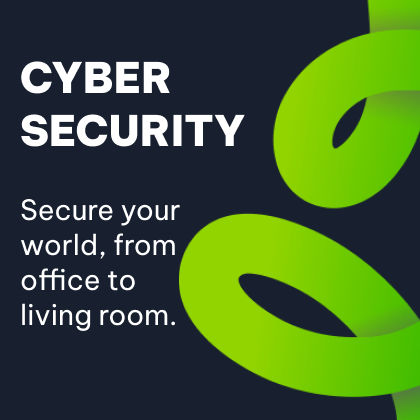The Internet of Things (IoT) is the interconnection between everyday objects or “things” that are embedded with computing technology and are able to send and receive data from each other.
Think your fridge connecting to your phone and telling it you’re out of milk while you’re at the grocery store.
The fast connection of 5G, Fibre and WiFi 6 will together enable IoT products to speak to each other and essentially ring in the pinnacle era of the smart age. Think smart homes, smart transport, smart education and ultimately smart cities – run by technology with little human interference.
The Game Changers
Fibre
Fibre is your best bet when using IoT devices in homes and business buildings. It has a lower contention ratio than 5G and is your fastest internet connection. It is however a fixed connection and therefore won’t have the advantage of being mobile. “Things like cars and phones that rely on mobility will not always be able to connect to fibre, but “things” like home appliances, TVs and garage doors can be brought to life with IoT through a fibre connection”.
WiFi 6
WiFi 6 has a lower contention ratio than 5G, by creating narrower dedicated channels. This means there are less people sharing channels on WiFi 6 than on 5G, where many users share the same bandwidth. WiFi 6 will work well in all public spaces. It will not only significantly improve user experiences in your usual WiFi hotspots like restaurants, hospitals, schools and businesses, but it will also bring WiFi capabilities to public transport like buses, trains, planes and the like or public spaces like streets, parks, beaches and any other public space you can think of.
The disadvantage however is that we are not ready for WiFi 6. Devices like smartphones need to have WiFi 6 enabled technology to utilise WiFi 6 and as of yet, these devices have not yet been built. The equipment needed to build devices for WiFi 6 is currently expensive and since people aren’t using it, it is not yet needed. So, while WiFi 6 exists, we can’t use it to its fullest potential.
Think smart homes, smart transport, smart education and ultimately smart cities.
5G
5G is said to bring higher throughput, lower latency and lower cost than the mobile generations that came before it. The predecessors of 5G all brought a faster speed and lower price than the technologies before them, but unlike 5G, they were not catalysts of the smart world. The speed and mobility of 5G will enable a world run by IoT technology. Signal strength, high contention ratios (the high amount of people using one network) and the dependency on base stations that could go down due to power cuts, is however the disadvantage of 5G connectivity.
Related: How the Internet of Things can drive industry growth in the post-pandemic world
The world is abuzz about 5G, but to usher in this smart age, we need more than just 5G, we need multiple Internet connections sharing the load so that devices can send and receive data seamlessly. Fibre will work best in homes and buildings and WiFi 6 in public spaces, while 5G fills the gaps in between. Relying on only one internet connection to usher in this smart utopia is shortsighted. As they say, the cord of three strands is not easily broken, even if some of those cords are wireless.














